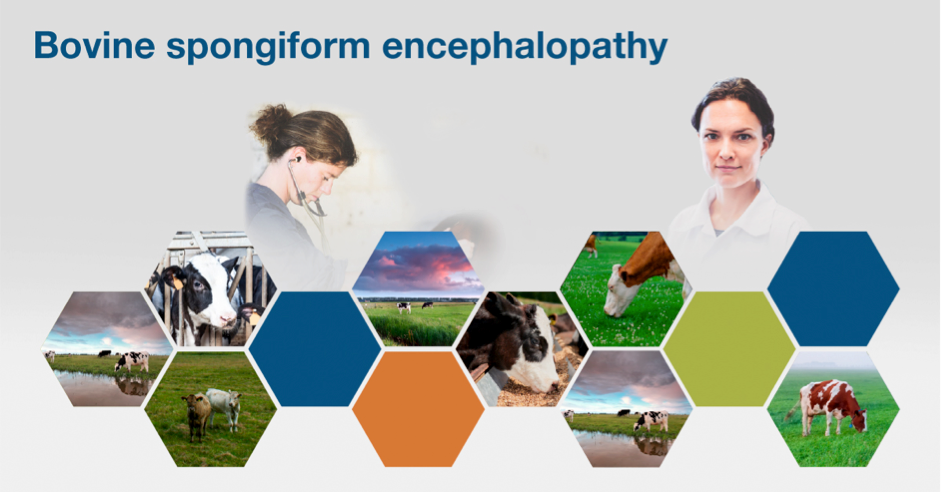



How Diagnostics Kept the Swiss Mad Cow Disease Program a Step Ahead During a Crisis
When the Bovine Spongiform Encephalopathy (BSE) crisis hit, Switzerland was a step ahead of many countries in Europe. The Swiss National Reference Laboratory had already implemented measures that would pay off in two ways: by controlling the disease in the cattle population and by protecting the human population. To start, Switzerland was the first country to apply extra surveillance using a rapid diagnostic test. After training as a veterinarian, in 2003 Dr. Torsten Seuberlich joined the NeuroCentre Department of Clinical Research and Veterinary Public Health, Division of Experimental Clinical Research, at the University of Bern, Switzerland, where he now leads a team of researchers. The Division of Neurological Sciences acts as the Swiss National Reference Laboratory for Transmissible Spongiform Encephalopathies in animals. In 1998, they became one of the World Organization for Animal Health (OIE) Reference Laboratories for Bovine Spongiform Encephalopathy (BSE) and Scrapie. The current role of the Swiss National Reference Laboratory is confirmatory diagnostics of clinical cases and suspected cases. As part of the national surveillance program, the laboratory also screens a percentage of all the samples that pass through the routine testing laboratories.
After training as a veterinarian, in 2003 Dr. Torsten Seuberlich joined the NeuroCentre Department of Clinical Research and Veterinary Public Health, Division of Experimental Clinical Research, at the University of Bern, Switzerland, where he now leads a team of researchers. The Division of Neurological Sciences acts as the Swiss National Reference Laboratory for Transmissible Spongiform Encephalopathies in animals. In 1998, they became one of the World Organization for Animal Health (OIE) Reference Laboratories for Bovine Spongiform Encephalopathy (BSE) and Scrapie. The current role of the Swiss National Reference Laboratory is confirmatory diagnostics of clinical cases and suspected cases. As part of the national surveillance program, the laboratory also screens a percentage of all the samples that pass through the routine testing laboratories.
“When we received our OIE reference lab mandate, we were one of the few countries in continental Europe with indigenous BSE cases,” said Dr. Torsten Seuberlich, professor at the University of Bern NeuroCentre Department of Clinical Research and Veterinary Public Health. “Our institute had a long-standing tradition in neuropathology in animals, which included the microscopic investigation of cattle brains. At the time, we also already had the experience of using rapid tests in this screening program. BSE investigations were our core expertise and we were in a position to advise the OIE and other European countries.”
Surveillance implementation in Switzerland
The Swiss National Reference Laboratory had the opportunity to work with Prionics, a small spin-off company from the University of Zurich that is now part of Thermo Fisher Scientific, which had developed an antibody to test for the bovine prion protein. The company also had a procedure to use it in a Western blot assay.
“The first trials were done in the framework of a BSE control in Switzerland, so we were able to collaborate with the cofounders [and help] set up an active surveillance system,” he said. “This worked well in Switzerland because we were ready to actively look for cases; other countries were much too afraid.”
Unlike in other countries, Swiss leaders understood that BSE was not being transmitted like the flu, so there was no need to cull herds, nor did farmers incur huge economic losses. Cases detected in Switzerland were properly compensated, so it was not an issue for a farmer to report a BSE-suspicious animal.
Over time, the diagnostic collaboration efforts paid off and served as a progressive example for other countries. The general design of the Swiss active BSE surveillance program was adopted by other countries.
The evolution of active surveillance diagnostics
 As soon as the rapid test became available, it was used on huge numbers of samples. The first study tested herds that were culled after BSE cases were diagnosed. The goal wasn’t to control the disease, but to see whether this type of test could identify additional BSE cases in the herd that were not detected by the clinical examination.
As soon as the rapid test became available, it was used on huge numbers of samples. The first study tested herds that were culled after BSE cases were diagnosed. The goal wasn’t to control the disease, but to see whether this type of test could identify additional BSE cases in the herd that were not detected by the clinical examination.
The Swiss team was surprised to see that the rapid test allowed them to identify additional animals on the same farm that were infected but did not yet show any signs of disease.
“That was the point where we realized the advantage of the rapid test,” said Dr. Seuberlich. “We could screen a sample of the population to assess the prevalence of the disease without relying on recognition of the clinical signs, which are often not easy to interpret, and without having a bias by reporting or not reporting. In this framework, the rapid test advances the whole process because it gives an unbiased view of the situation in the population.”
Based on the available diagnostics, the team quickly decided to test all Swiss animals at risk for BSE that had died on farms from other causes, because they were at a higher risk than animals that would go to a normal slaughterhouse. Thus, these were not animals that would enter the food chain.
“Our purpose was to follow and determine the prevalence and development of the disease,” he said. “The measures taken to protect the consumer were different. In our view, the testing had its main advantage in providing information on how well the measures that we applied to control the disease were working, which was really critical.”
BSE became an EU crisis
Two key factors created the BSE crisis in Europe. The first was the huge error of feeding meat and bone meal from ruminants back to ruminants. This choice opened up a way for the prion agent to recirculate in the cattle population. Due to the agent’s long incubation period, the error only became visible after years.
“When the disease was detected, it was actually too late to stop it and the main measure was to implement the feed ban, meaning to stop feeding meat and bone meal from cattle back to cattle,” explained Dr. Seuberlich. “However, the crisis was related to the pathology of the disease. When you implement [measures] to control the disease, you of course want it to show that effect immediately, but in this case, it took about five to six years after implementation, which was certainly a major factor in creating a crisis environment.”
The second key factor came in 1996 when it became clear that BSE affected not only cattle, but humans as well. It shifted from a pure cattle disease to a zoonotic disease, which created an atmosphere of fear for the public. At that time, it became a problem to find BSE cases in a population that authorities and politicians claimed was free from the disease.
“This was a disease nobody wanted to have, and if nobody wanted to have the disease, it just didn’t exist,” he said.
The number of cases of Variant Creutzfeldt-Jakob disease, which is correlated to BSE in humans, is considered low in Europe.
“Since 1996, there have been about 200 cases in total in the UK compared to almost 200,000 BSE cases, which is horrible, but it could have been much worse,” he noted. “In the rest of Europe, there are very few cases of Variant Creutzfeldt-Jakob disease related to the BSE epidemic.”
Core components of the Swiss BSE program
The BSE program in Switzerland had two main pillars. The first was to control the disease within the cattle population, and for this goal, the main strategy was to ban the feeding of meat and bone meal to cattle in 1990.
The second pillar was to protect the human population from BSE exposure and infection. This initiative occurred at the slaughterhouse, where the animal carcasses were processed immediately. Specific tissues containing BSE prion activity were removed. This “specified risk material” included the brain, spinal cord and intestines. Switzerland focuses its testing on at-risk animals.
“The program was monitored by the effectiveness of these measures over the years, especially in the cattle population to control the disease,” Dr. Seuberlich explained. “We wanted to see how these three components played together: disease control in animals, consumer protection and surveillance. Surveillance has been reduced but is still ongoing.”
“Even now, I would not call it eradicated — just that the prevalence has dropped below our detection level — because, during the entirety of the epidemic, we never found 100% of the cases,” said Dr. Seuberlich.
The role of diagnostics in the program
“It would have taken much longer to identify the first cases in many countries without the initial product developed by Thermo Fisher Scientific,” said Dr. Seuberlich. “Then the rapid test really took BSE surveillance to another level, allowing us to monitor disease prevalence efficiently and to control the disease and assess whether the measures were working.”
“Given the situation in other European countries, it would have not been possible to detect BSE cases in 2000 without the diagnostic tools that had been developed,” he said.
The current BSE situation in Switzerland
 Switzerland had the last reported BSE case in 2006. However, there are a few cases of atypical or sporadic BSE in the population. Their prevalence does not appear to change over time. In Europe, there are about three to four of these atypical BSE cases per year.
Switzerland had the last reported BSE case in 2006. However, there are a few cases of atypical or sporadic BSE in the population. Their prevalence does not appear to change over time. In Europe, there are about three to four of these atypical BSE cases per year.
“The next hurdle is to maintain the situation, the surveillance measures, especially the meat and bone meal feeding ban and the removal of at-risk material from the carcasses at slaughterhouses,” Dr. Seuberlich said. “These are materials that have a value and need to be destroyed, and it costs money to destroy them. There’s pressure to change the system and to relieve some of the measures.”
The challenge is to keep the level of protection as-is but at the same time consider allowing changes to the controlled system that would prevent the disease from spreading in case of reemergence. These decisions are expected to arise in the future on an international level, he explained.
Lessons learned from BSE
The key lesson taught by BSE is that decisions in an emerging disease situation must be based on scientific evidence and not driven by consumer fear.
“At the beginning, nothing was known about the cause of the disease, how it was transmitted, the etiology, etc.,” explained Dr. Seuberlich. “Science must provide the basis to the people who are making decisions on the control measures. This became very clear during the BSE epidemic, and it would be the same for other emerging disease situations, like avian flu, swine flu and the like.”
One other lesson Dr. Seuberlich noted was to learn from and draw on the experience of others. He said the Swiss researchers had very open international communication and collaboration with the UK team. This collaboration quickly bolstered their knowledge and allowed their team to approach the disease with the scientific basis that helped them to avoid much of the public panic that other countries faced.
Collaborating with Thermo Fisher Scientific
“It was really an inspiring collaboration that brought the team forward. We tried to find solutions to problems, and I credit our success to the fact that we always had a very open dialogue with the Thermo Fisher team,” he said. “During the whole development stage of these diagnostic tests, there were different generations, and they were all evaluated in our laboratory on real samples before being brought to market, which was a fruitful process.”
Photos courtesy of the NeuroCentre Department of Clinical Research and Veterinary Public Health, University of Bern, Switzerland
Explore the Thermo Fisher Scientific Animal Health portfolio and our 50+ Years of Expertise. Applied.
For veterinary use only. For in vitro use only. Regulatory requirements vary by country; products may not be available in your geographic area.
TheCattleSite News Desk





